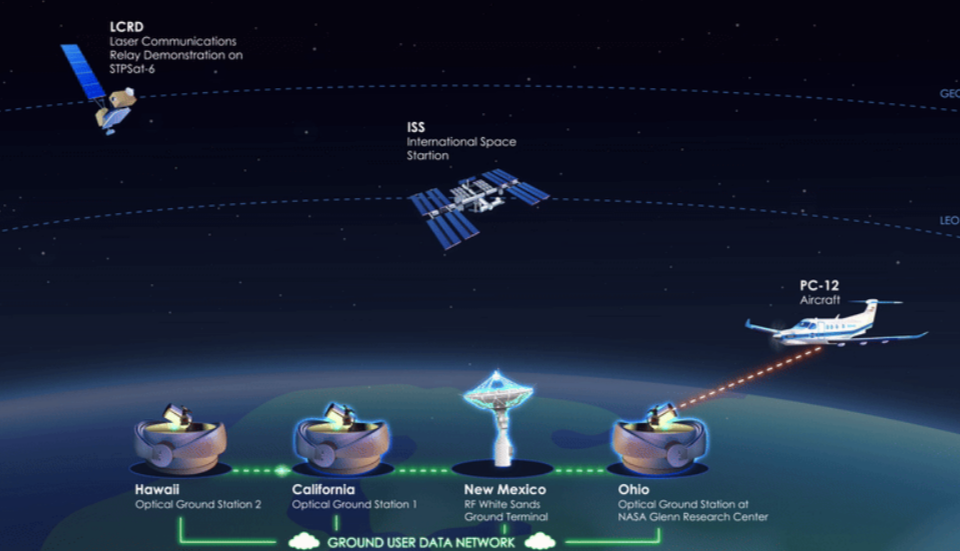NASA researchers have successfully tested laser communications in space by streaming 4K video footage originating from an airplane in the sky to the International Space Station and back. The feat demonstrates that the space agency could provide live coverage of a Moon landing during the Artemis missions and bodes well for the development of optical communications that could connect humans to Mars and beyond.

NASA typically uses radio waves to transmit data and communicate between the Earth's surface and space, but infrared laser communication can transmit data 10 to 100 times faster than radio, NASA said. Engineers equipped a plane with a handheld laser terminal and flew over Lake Erie, beaming data back to downtown Cleveland. The data was then transmitted via a ground network to NASA's test site in New Mexico, where scientists monitored the transfer of the data 32,000 miles away to NASA's Laser Communications Relay Demonstration (LCRD) satellite, which then transmitted them to ILLUMA-T (Integrated Laser Communications Relay Demonstration Low Earth Orbit User Modem and Amplifier Terminal) on the ISS. Although the Artemis mission has been postponed, a fourth mission to return humans to the Moon is still planned for 2028.
By that time, we will be able to watch 4K live broadcasts of astronauts on the Moon's surface on public 8K televisions. NASA has traditionally used radio waves to transmit data and communicate with space, but laser communication can be 10 to 100 times faster. Last year, NASA used a space laser to beam video of a cat from space to Earth. In that particular test, the video reached Earth in 101 seconds and was sent at the system's then-maximum data rate of 267 megabits per second.

.png)


.jpg)
.png)
.png)
.png)
.png)
.png)